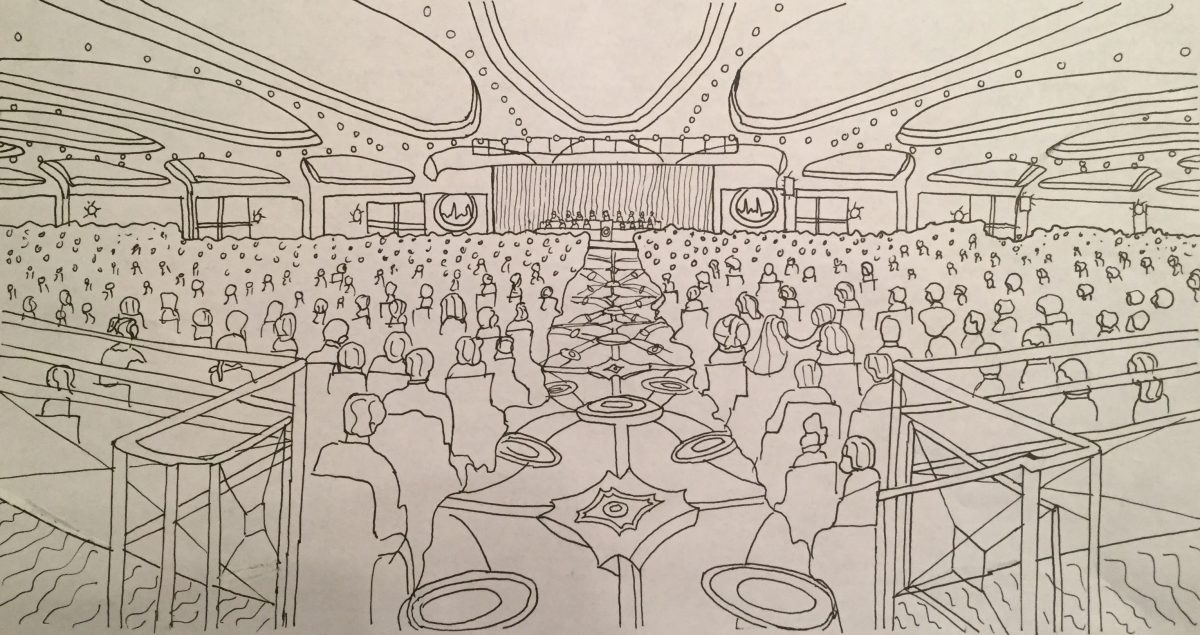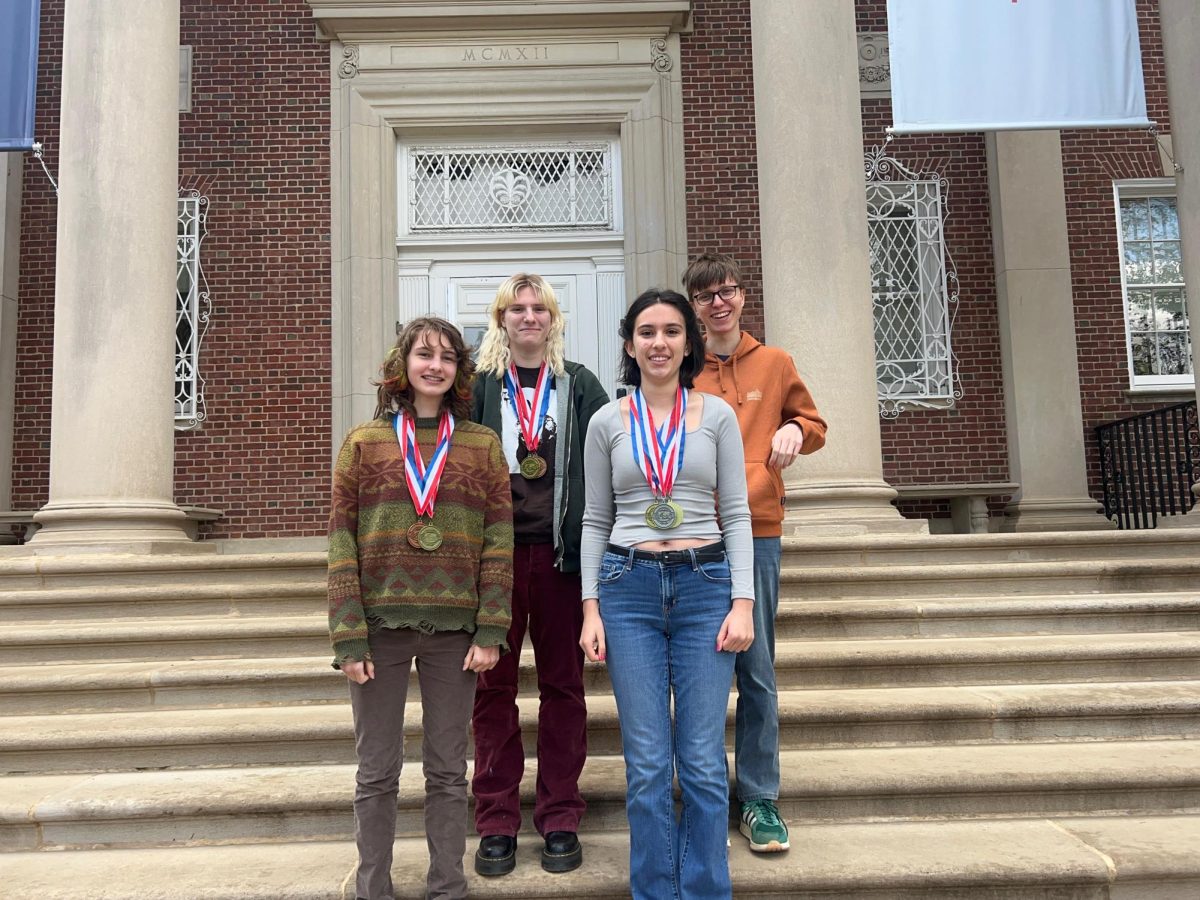The WIS Model United Nations club has had the opportunity to attend conferences locally and nationally in New York City, but from Feb. 16 to Feb. 19, eighteen club members attended the 54th annual North American Invitational Model United Nations (NAIMUN) at the Washington Hilton Hotel.
The conference aimed to educate and inspire future leaders in government, business, and international affairs. To do so, over 3,300 high school and college students (many whom travelled from elsewhere) were assigned a character or delegation from a specific committee to investigate their position in present world issues. They discussed numerous topics like the Syrian refugee crisis or the global CO2 emissions aiding climate change.
Once at the hotel, club members undertook speeches, participated in discussions, made alliances, wrote resolutions, formed amendments, followed voting procedures, and essentially engaged in realistic diplomatic simulations.
Zoe Abel, a 9th grade WIS student and first year NAIMUN attendee, was really excited to take part in the conference. “I thought that it was going to be a really life changing experience where I would be able to learn a lot and communicate with new people who are interested in becoming global leaders and more effective world citizens,” she said.
At NAIMUN, Abel sided with the majority of WIS students who took part in a General Assembly committee. Together, these assemblies compose the General Assembly – the central decision-making body in the United Nations where every delegate has a single vote. As they are greatly influential in the organization, the General Assembly committees comprised of the largest groupings at the conference.
The first, third, and fourth General Assemblies were especially dense, so they were situated in the main ballroom of the hotel. For four days, the room was divided into three large sections to hold around 250 students each. Seats were arranged to face large screens that showed the speakers lists, microphones where speeches took place, and the committee chairs (the heads of the committees).
Sacha Davies, a 9th grade WIS student, attended the first General Assembly committee in the middle section of the ballroom. “I was a little intimidated when I first walked into the room because not only was it huge, but there were already so many people there. What I mostly felt, however, was excited because I was going to be working with amazing, experienced people for the next four days. It was something new for me, and I was looking forward to seeing what was to come,” Davies said.
According to Grace Kim, the third General Assembly chair and senior student at Georgetown University, the key to a successful experience at an MUN conference relies predominantly on participation. The excitement and determination that goes with making a speech in front of a whole committee certainly makes the experience worthwhile. However, the large General Assembly committees made being a risk-taker a challenge.
Anna Martinelli-Parker, a 9th grade WIS attendee, had trouble participating as a co-delegate of Equatorial Guinea in Grace Kim’s committee. “It was very fascinating since you got to experience what a real UN meeting is like with every delegation present, but the size of it and how you really couldn’t speak as much as you wanted kind of drew back the general experience. Sometimes you just found yourself sitting there doing nothing because you couldn’t do anything but listen to the speakers, which could get a bit boring,” Martinelli-Parker said.
NAIMUN sessions varied in length, but they could last up to four hours and 30 minutes. Therefore, as the size of the General Assembly committees limited participation in delegates, students also found themselves enduring long hours, triggering boredom in many of them.
WIS club members, however, had other committee choices available previous to the conference. Smaller settings like the Parliament of Catalonia, the World Trade Organization, and the Red Cross were options containing less representatives but a higher chance of involvement.
Sophia Azimi, a 10th grade student at WIS and one of the five MUN club leaders, believes club members could’ve had a more positive experience in smaller assemblies. “I do think we should have picked better committees for the WIS students. Most people got stuck in General Assemblies, which are often tedious and much less personal. As a rule of thumb, smaller committees are often easier to get involved in, and the debate is more fast-paced,” Azimi said.
Despite the momentary boredom, WIS General Assembly members were still able to flourish as educated individuals. NAIMUN provided a learning experience where students could enhance their researching, debating, writing, public speaking, teamwork, critical thinking, and leadership skills. This was enough to make a memorable time for many attendees.
“My favorite memory is when I got up to give a speech in front of my whole committee and I got lots of notes from fellow delegates saying that they were interested in working with me since our countries shared similar ideas,” Abel said. “It was great that I’d been able to communicate what Swaziland stands for, whom King Mswati III is and all these interesting things that I didn’t even know beforehand.”
WIS students also valued the social aspects of the conference. To them, getting to know people from different parts of the nation and even the world added to a greater experience.
“After being worn down from a long day of school, when I walked into the Hilton and saw thousands of kids milling around, I felt extremely dizzy,” Azimi said. “My committee was also pretty big, with about 100 students. This made me really anxious and intimidated on the first day, but I was fortunate enough to meet some really awesome people who made the conference extremely enjoyable later on.”
All in all, most WIS students who participated in this year’s conference left with tired eyes but smiles on their faces. They would certainly agree with Azimi when she said,“I had fun and would consider doing NAIMUN next year.”
By Alejo Gonzalez


































































